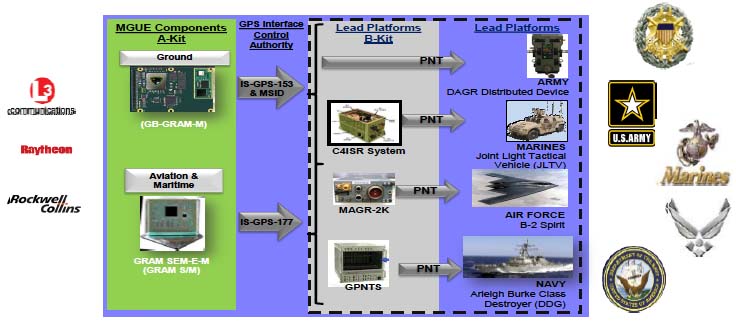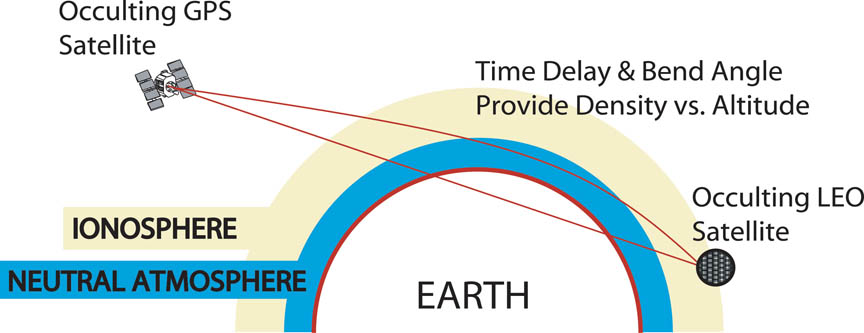The program to develop M-code capable receivers for military equipment is poised to enter a new phase this fall as the GPS Directorate seeks approval to start the engineering activities that will lead, ultimately, to full production.
The program to develop M-code capable receivers for military equipment is poised to enter a new phase this fall as the GPS Directorate seeks approval to start the engineering activities that will lead, ultimately, to full production.
The Military GPS User Equipment (MGUE) program will be evaluated this fall by a Defense Acquisition Board or DAB. That board — which will include the Pentagon’s top acquisition official, Frank Kendall, the under secretary of defense for acquisition, technology, and logistics — will decide if the MGUE program is ready to proceed to Milestone B.
"The milestone marks the end of the technology maturation phase of the program," explained Col. Edward Hospodar of the GPS Directorate’s User Equipment Division. "You enter into the next phase of the program, which is the formalization of an acquisition program. That’s what Milestone B accomplishes."
Kendall was on a DAB that assessed MGUE in January, deciding at the time to have the Air Force further refine its Acquisition Program Baseline.
"At a DAB one of the things that gets approved is the Acquisition Program Baseline. People call it the APB," said Hospodar. "The APB is fundamentally the agreement between the service and the defense acquisition executive about the milestones and budget requirements that are in the program. Essentially the Air Force took an action to refine the APB and return to the DAB."
The goal was to improve schedule fidelity, the Air Force said in a written response to a question from Inside GNSS about what refinements were being sought.
"MGUE is a very complex activity that synchronizes five designs from three contractors delivering to government testing at two locations and integrating into four lead platforms identified by the Services: B-2 bomber, Arleigh Burke destroyer, Stryker, and Joint Light Tactical Vehicle," the service said. "The Acquisition Program Baseline incorporates the most recent data from the contractors, more refined plans for government conducted developmental test, and updates from the lead platforms based on receipt of proposals."
The overall approach to the program, however, has not changed over the last 18 months the Air Force noted. The program is proceeding with three contractors — L-3 Interstate Electronics Corporation, Raytheon, and Rockwell Collins — who are in the process of delivering hardware and incremental software builds for that hardware. Additionally, the program is preparing for government developmental test while continuing early integration of test articles into Service-nominated lead platforms.
Other basic elements of the program — security, performance requirements, and a focus on developmental testing — remain unchanged," the Air Force said.
The program office and Office of the Secretary of Defense (OSD) staff "captured the current developmental test activities in the Developmental Evaluation Framework [DEF] in parallel with the coordination cycle for the GPS Enterprise Test and Evaluation Master Plan," the service added.
Additional testing is planned, said Hospodar, "to better characterize multiple aspects of the performance such as the power usage." The Enterprise Test and Evaluation Master Plan has been updated to contain that DEF and is in the coordination process, he added.
Innovations in Increment 2
Although delays in the program and in other elements of the GPS modernization effort might offer a window for integrating the latest advances, "there are no plans to implement new technology into contractors’ current designs in the MGUE Increment 1 program," the service said. "Introducing any potential new technologies at this time would impact delivery schedules to the government test program and to the Service lead platforms for integration."
"However," the Air Force added, "MGUE Increment 2 will offer opportunities to include new technologies."
In fact, the second increment is already on the mind of the Acquisition Board, which wants to address the acquisition approach during its upcoming meeting. Increment 2, the Air Force said, "includes requirements for handheld devices, space receivers, and precision-guided munitions which go beyond the Increment 1 ground-embedded and aviation/maritime form factors to support an expanded set of users."
Form factors are the standardized physical models of the receivers created so that they fit into existing equipment no matter who makes the receiver, in much the same way that batteries from different manufacturers fit into existing cars.
"The MGUE form factors, the two that were selected — the Standard Electronics Module Format E, we call it SEM-E for the aviation and maritime users; and the small serial interface, we call it the SSI, for the ground imbedded users — those were specifically chosen to accommodate replacement of the most common of the currently fielded SAASM receiver cards,” according to the Air Force spokesperson. “So, there are many different kinds of SAASMs, but the two form factors that were picked for MGUE replaced what would be the most common physical ones."
The SEM-E will be used for the GRAM S/M and the SSI will be used by the GB-GRAM-M.
The GPS Directorate is also working with the Air Force Research Lab and Mayflower Communications Company to design, develop, and demonstrate a small size, weight, and power (SWaP), navigation warfare–compatible, M-code device for resource-limited applications. This Phase III Small GPS User Equipment (SGUE) effort, which is being conducted as a Small Business Innovation Research (SBIR) activity, aims to support both low-to-medium dynamic and high dynamics platforms.
"The same SGUE chip could be packaged into different form factors tailored for the specific platform application to include different software loads that customizes tracking loop filters, navigation filters, and integration with other sensors," the Air Force said.
The GPS Directorate is also researching a government furnished cryptography reference design for SGUE. The MGUE program implements cryptography designs developed by the three MGUE contractors.






